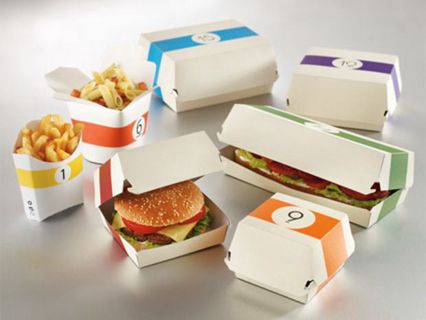
In today’s competitive food industry, packaging is not just about protection. It is a powerful tool for branding and communication. Custom edible boxes can set your brand apart and leave a lasting impression on customers. With thoughtful design and a creative approach, you can make your packaging a key element in your business success.
Focus on Simplicity with a Natural Feel
Keeping the design simple is a powerful strategy. A clean layout with earthy tones and minimal elements gives a natural, honest appearance. This is especially important for brands that promote health, sustainability, or organic food. A simple design feels more personal and less commercial. It helps people connect with your product in a more genuine way.
Simplicity also makes your message clear. A logo, brand name, and a short tagline may be all you need. You can add subtle textures like recycled paper or a matte finish to enhance the look. This will show that you care about both the environment and the product. Using soft, neutral colors such as greens, browns, and whites also appeals to the eco-conscious buyer.
Another key factor is legibility. When a box has too many words or graphics, it confuses the customer. Simple fonts and easy-to-read text help communicate your message quickly. When designing, think of how it looks from a distance or on a shelf. If the box is easy to spot and understand, it will likely attract more buyers.
Simplicity doesn’t mean boring. You can add a fun twist like a cut-out window shaped like a leaf or fruit. This keeps the packaging functional and attractive. Customers love small creative touches that show effort and thought. They help create a memorable brand experience.
Go Eco-Friendly with Sustainable Materials
Customers today care about the environment. That’s why using sustainable materials in your packaging can make a big difference. Boxes made from recycled paper, plant-based inks, or biodegradable coatings show that your brand is responsible and forward-thinking.
Many companies are switching to edible packaging boxes made from materials that break down naturally. While protecting your product, they also reduce waste. This makes customers feel good about buying your item. It also aligns your brand with values like care and responsibility.
You can even take things further by adding a message inside the box explaining how the material is eco-friendly. Simple facts about the packaging’s impact can inspire your customers. They might even choose your brand over others simply because of your environmental efforts.
If you use compostable or reusable materials, make sure to highlight this on the box. Add a small icon or message that says “100% compostable” or “Reuse this box.” Customers appreciate knowing how to dispose of or reuse the packaging properly.
Making eco-friendly choices shows that your brand is about more than profit. It shows that you care about the planet, which can help you build a loyal customer base.
Use Storytelling to Build Connection
People love stories. They create emotional connections and give meaning to products. When you use your packaging to tell your brand’s story, it gives customers something to remember. A simple message about your company’s journey, values, or ingredients can go a long way.
Start by asking: What makes your product different? Is it made from family recipes, sourced from local farms, or created with a mission? Turn these ideas into a short, touching story. Print this story inside the box lid or on a side panel. It adds value without cluttering the main design.
Even a few well-chosen words can help. For example, sharing how your idea began in a small kitchen or how you support local workers can inspire loyalty. Customers feel good supporting a brand with a purpose. It also builds trust. If people believe in your story, they are more likely to buy again.
Visual storytelling also works well. Instead of long paragraphs, use symbols or illustrations. A timeline of your brand’s growth, hand-drawn maps of ingredient sources, or photos of your team can all connect emotionally. When people feel a connection, they’re more likely to talk about your brand and share it with others.
Add Interactive Elements to Boost Engagement
Making your packaging interactive is a smart way to make it unforgettable. Customers love surprises, and a little playfulness can improve the unboxing experience. It can be something as small as a message under the flap or a peel-away label with a secret code.
QR codes are also popular. They take up little space but offer a lot of content. Customers can scan the code to see videos, recipes, or your brand story. You can even connect it to your social media page. This helps keep customers involved with your brand even after they finish the product.
Another idea is adding a reusable element. For example, a box that turns into a tray, or one with seeds hidden in the cardboard for planting. These features make your box useful and create long-term brand awareness. People are more likely to keep or share packaging that has another purpose.
Interactive boxes also give people a reason to post on social media. When a customer shares your packaging online, it gives your brand free promotion. Creative and playful packaging will spark curiosity and make customers want to share their experience with friends.
Customize with Seasonal or Limited Designs
Offering seasonal or special-edition packaging is a great way to make your brand feel fresh and exciting. Changing the look of your boxes during holidays or events gives customers a reason to keep coming back. It also creates a sense of urgency, which can boost sales.
For example, you can create a winter-themed box with snowflake patterns, or a spring design with floral prints. Use bright colors and fun graphics to match the season. Even small changes like a festive sticker or a printed ribbon can make the box feel special.
Limited designs can also mark company milestones or collaborations. These editions give customers something to collect and remember. When a box is beautiful or unique, customers are less likely to throw it away. They might use it as storage or share it on social media.
These seasonal boxes also make great gifts. People often choose products based on how attractive the packaging looks. A custom box with a holiday theme can turn your product into the perfect present. Customers are more likely to buy again if they know your packaging changes throughout the year.
Highlight Health and Freshness in Design
People want to know that their food is safe, fresh, and healthy. Your packaging design can help share this message clearly. Clean labels, ingredient lists, and nutritional info should be visible and easy to read. This builds trust and shows you have nothing to hide.
Use colors and fonts that reflect health and freshness. Green, white, and pastel shades often work well. A window that shows part of the product can also build trust. People like to see what they’re buying, especially when it comes to food.
You can also add health badges or stamps. These include phrases like “Gluten-Free,” “Vegan,” or “No Preservatives.” Customers often scan packages for these claims before making a choice. Make sure they are not hidden in small text.
Using icons or illustrations of ingredients is another great way to show freshness. A picture of a ripe fruit or a drop of honey can suggest natural quality. Keep it simple but strong. It helps your packaging feel honest and appealing.
Conclusion
Creative branding for custom edible boxes is more than just design—it’s a chance to connect, inspire, and build loyalty. By using simple yet thoughtful elements like storytelling, interactive features, seasonal themes, or local culture, your packaging can speak directly to your audience. Sustainable materials and health-focused designs also show your values and attract conscious consumers. When your packaging reflects your brand’s identity and purpose, it becomes part of the experience, not just the product. This approach not only increases customer trust but also sets your business apart in a competitive market.
Follow Anita Terry to stay updated on their latest posts!
0 comments
Be the first to comment!
This post is waiting for your feedback.
Share your thoughts and join the conversation.
